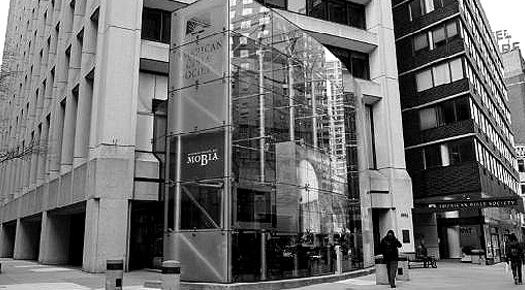
Having failed to secure a new space after the sale this year of its current home in Manhattan, the Museum of Biblical Art (MOBIA) is expected to shut down in June.
This winter, the decade-old museum inside the American Bible Society’s building near Columbus Circle, mounted its most successful show – a display of famed Renaissance sculptures by Donatello and other artists that drew not only critical raves but also large audiences, a turnover that the museum has not witnessed since its opening in 2005. Yet, museum officials announced on April 28 that they have not been able to raise enough funds to cover the cost of a market-rate space in Manhattan.
“The time frame was just too tight,” said museum Director Richard P. Townsend.
The decision to shut down highlights the challenges faced by small-sized and medium-sized cultural organizations in New York City, where rents are skyrocketing and competition for audiences and donors are fierce.
A secular establishment that assesses the Bible’s impact on Western art, MOBIA has over the last ten years mounted critically acclaimed shows on subjects ranging from the ecclesiastical work of glassmaker Louis Comfort Tiffany to the 400th anniversary of the King James Bible. With a small staff, no endowment or permanent collection, the museum had one single advantage, which is, it was required to pay only $1 each year for rent on Broadway.
The American Bible Society is nearly a 200-year-old nonprofit that endorses engagement with the Bible and it announced in March last year that it would sell the property and move to Philadelphia. Since then, Townsend claims to have checked out real estate, sought new donors and explored potential partnerships with other museums and educational institutions. MOBIA, with an average yearly budget of $2.8 million, faces two challenges at the moment – coming up with an extra $1.5 million to $5 million to afford yearly rent as well as some more millions to equip the space with museum-quality humidity and temperature conditions.
“The cheapest appropriate space, which still would have required a build-out, was about $1.4 million, Townsend said. “You don’t go from zero to 60 in a matter of months. As the board looked at this very carefully, they didn’t see a way forward, unless a white knight came and wrote a huge check.”
MOBIA will close for the public on June 14, the last day of the current exhibition, and cease operations completely on June 30. This will cause the cancellation of a planned joint exhibition with Andy Warhol Museum that was going to feature the artist’s ‘The Last Supper’ series. Another collaboration, which is part of a traveling exhibition, titled ‘Power and Piety’, featuring Patricia Phelps de Cisneros’ collection of Spanish colonial art, would have to be cancelled as well.
“It’s really disappointing on a lot of levels,” said Brian O’Neil, chairperson emeritus of MOBIA’s board. “And yet the plight of the small museum is a tough one.”
MOBIA started off as an art gallery in 1997, when it was founded by the American Bible Society but it became a secular entity in 2004, before reopening for the public the following year after a major renovation. It continued to receive a lot of support from the American Bible Society however. Recently, that support was scaled back after MOBIA said that it would transition into a fully independent entity and the museum did manage to generate some funds on its own, despite being faced with a grave financial crisis.
“There was an exponential difference between that,” O’Neil said, “and the need to find our own place, fix it up and pay a higher rent.”
MOBIA’s board thanked the American Bible Society, calling it the museum’s most kind supporter from the very start. Both O’Neil and Townsend said they were proud of the museum’s exhibitions and disheartened that their efforts to sustain it as an independent establishment failed to gain traction.
“If you’re a nonprofit and you don’t own your building, and you don’t have an endowment, it’s going to be a tough slog, at least in New York City,” Townsend said. “We are proud that we can offer this truly great last exhibition.”
American Bible Society spokesperson Geof Morin said that he is grateful to museum staff as well as board members for their efforts in trying to highlight the cultural relevance of Biblical art.
Photo Credits: Wall Street Journal
